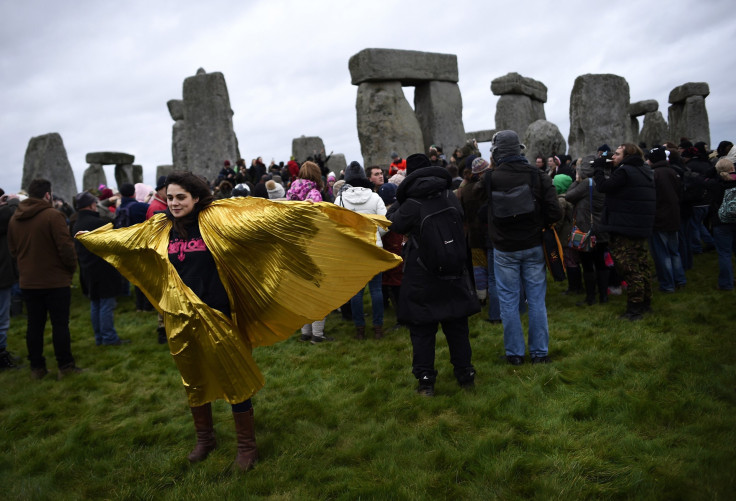Winter Solstice 2015: 5 Facts To Know About The First Day Of Winter

Days before each Christmas comes the winter solstice, the shortest day of the year in the Northern Hemisphere and the longest in the Southern Hemisphere. Here are five must-know facts about the solstice, why it occurs and its history.
1. When is the winter solstice? In 2015, the winter solstice arrives Monday at 11:48 p.m. EST. It represents the first day of winter. After the winter solstice, the days grow longer in the Northern Hemisphere and shorter in the Southern Hemisphere.
2. What is a solstice? A solstice is an astronomical event that happens when Earth's axis, which is tilted at an angle of 23.5 degrees, is at its maximum in leaning either toward and away from the sun. In contrast, an equinox occurs when Earth's axis is simply perpendicular to the rays of the sun. The following diagrams can help you visualize the difference:
Summer solstice is when the Earth reaches a point in its orbit when its axis is inclined toward the sun. See diagram. pic.twitter.com/GX5UrIo8Ur
— Nidhal G نضال قسوم (@NidhalGuessoum) June 20, 2013On equinox days, Earth's axis is not inclined toward or away from the Sun (see diagram). pic.twitter.com/umqY5kHqjQ
— Nidhal G نضال قسوم (@NidhalGuessoum) September 23, 20153. What's the history of winter-solstice celebrations? Different cultures, peoples and societies have celebrated the winter solstice for thousands of years. The pagan holiday of Yule falls on the winter solstice, the Romans had a weeklong feast known as Saturnalia (named for the god Saturn), and the Celts threw parties and had animal sacrifices. Because the days of the year grow longer after the winter solstice in the Northern Hemisphere, these celebrations were hopeful, marking the return of the sun.
4. Who celebrates it? Druids and Wiccans celebrate Yule by decorating their homes in red, green and white, by exchanging gifts, and by lighting Yule lights. Druids often mark the holiday by watching the sun rise at Stonehenge in England. Other celebrations are held at ancient sites elsewhere, such as Peru's Cerro del Gentil pyramid.
5. How many hours of daylight are there during the solstice? It varies. Alaska has about three hours 45 minutes of daylight, while the continental U.S. can see a range from fewer than 8 1/2 hours to more than 10 1/2 hours.
© Copyright IBTimes 2024. All rights reserved.






















